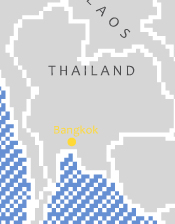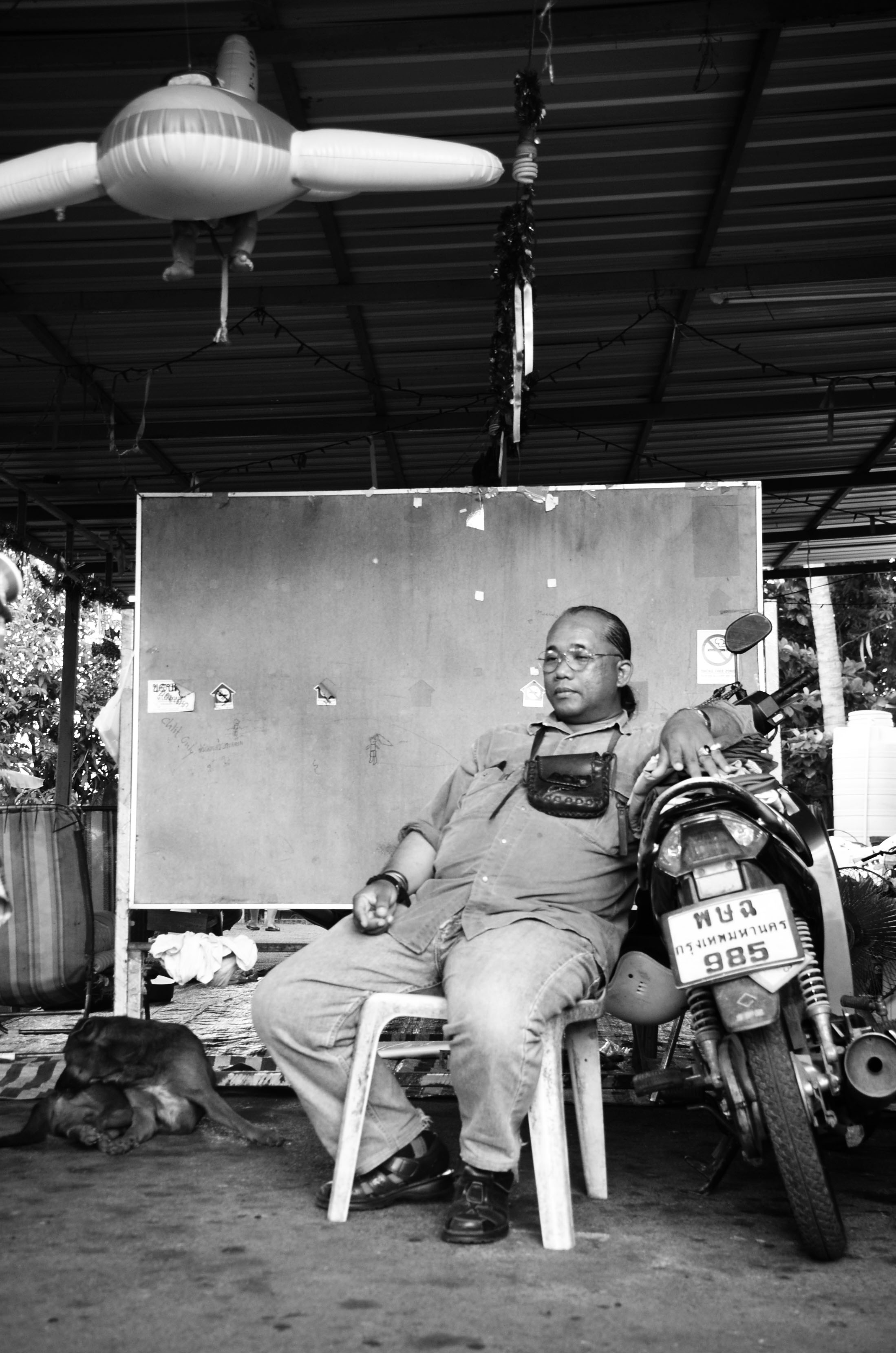 actions
actions
Home for the homeless in Bangkok
Thailand Homeless Network was set up in 2001, and it has since been working on many issues to improve the homeless lives, such as rights to access basic welfare, healthcare assistance, and temporary shelter. The Homeless Network built and run a homeless centre in Talingchan district, Bangkok, with funds from the government, where people previously living on the street share the living space. Here they started developing a sense of community, of home. They cook together, take care of pets. The next step, 15 years after the network’s inception, is to build a proper house and to create a mechanism for homeless people to access housing. This is the first housing project in Thailand, The project is currently under construction in Bangkok, not too far from the homeless centre.
Thailand’s “4 Regions Slum Network” found the land, a 30-year lease from the State Railway of Thailand, nearby other Baan Mankong communities. Homeless people could register as a Baan Mankong community, but due to their very low income and inconsistent savings, they couldn’t ap-ply for a loan. So the project draws on many other different resources: a grant for infrastructures from CODI; some funds from ACCA; money from Thai cement giant SCG (part of its corporate social responsibility project); and the Thai Health Foundation which also supported the Community Architects’ work.
At first, when it was all just an idea, many households wanted to join, around 40. But as the project got more demanding, implying serious savings and planning, many dropped out. Currently 16 households are engaged in the project. The community layout has two different types of housing. There are 8 single houses, good for families who desire privacy and propriety to pass on to their children in future and who are willing to take on the burden of a long-time payback, and a shared house with 8 rooms with toilet, for people who have no family, but want to live in a community where they have good relationships.
During the design phase, while estimating the costs, people wanted to pay less and less. Eventually it was agreed that the common facilities and housing structures will be built first, and house owners themselves will complete the construction with the materials available, allowing for alternative materials to reduce construction costs.
Initially the idea was that community people would carry out the construction themselves, after receiving some training. But this proved to be very difficult and time-consuming. After many months, the quality of the work was still disappointing and we even had to destroy the foundations and rebuild them. Then we decided to hire community builders from other Baan Mankong commu-nities, as contractors, leading the work; the homeless could join in to help if they wished.
As land and funds are scarce, and people are already used to share a lot in the Homeless Centre, the design reduced individual living space, prioritizing common spaces. There is a large common area and a community center, for the residents to spend time and rest together, including a fish pond and vegetable garden inspired by learnings from the 4 Region Slum Network on self-sustainable food production. Many workshops have been organised on the use of alternative mate-rials, including mud, to expand on people’s capacity and skills, and to help build the homeless community in a more uniformed way.
One of the community members, Mr.Eid, said: “It’s not easy to get the homeless to build a community together, as each person and their responsibilities is so different. At first we hoped the community would finish their rooms soon, but the truth is the process is very long. I have to wait for friends to build, or we don’t have time to spare because we have commitments to our other homeless fellows, we can’t forget our duty to help other homeless. Even though there are many problems in the process, we solve them when they arise, and learn from them, so hopefully it will be easier for the next homeless group to make their community.
I have come this far thanks to the Homeless Network, I don’t have a wife, I don’t have a child, one day when I die I will give my house and everything to the network. When I lived my life on the street I was despised many times for being homeless. I do not want to live in a society where people look at me in that way, I want to live in an environment where people in the community know I’m feeling well, with people who have had the same experience.
I hope that when I get the house, it gives me the opportunity to give a helping hand to homeless people even more. Many people from my village cannot access the welfare programs because they aren’t registered in the census, but with my house they can register. I own a home, but I wish it to be the core of the brethren, of homeless people. I dreamed about it and I will do it as long as I have energy, I will solve any problem, I have been through the lowest point of my life, I was bad before, but now I realized it, ahead will be better and better. That’s it.”
| Thanawin Wijitporn
Thailand’s “4 Regions Slum Network” found the land, a 30-year lease from the State Railway of Thailand, nearby other Baan Mankong communities. Homeless people could register as a Baan Mankong community, but due to their very low income and inconsistent savings, they couldn’t ap-ply for a loan. So the project draws on many other different resources: a grant for infrastructures from CODI; some funds from ACCA; money from Thai cement giant SCG (part of its corporate social responsibility project); and the Thai Health Foundation which also supported the Community Architects’ work.
At first, when it was all just an idea, many households wanted to join, around 40. But as the project got more demanding, implying serious savings and planning, many dropped out. Currently 16 households are engaged in the project. The community layout has two different types of housing. There are 8 single houses, good for families who desire privacy and propriety to pass on to their children in future and who are willing to take on the burden of a long-time payback, and a shared house with 8 rooms with toilet, for people who have no family, but want to live in a community where they have good relationships.
During the design phase, while estimating the costs, people wanted to pay less and less. Eventually it was agreed that the common facilities and housing structures will be built first, and house owners themselves will complete the construction with the materials available, allowing for alternative materials to reduce construction costs.
Initially the idea was that community people would carry out the construction themselves, after receiving some training. But this proved to be very difficult and time-consuming. After many months, the quality of the work was still disappointing and we even had to destroy the foundations and rebuild them. Then we decided to hire community builders from other Baan Mankong commu-nities, as contractors, leading the work; the homeless could join in to help if they wished.
As land and funds are scarce, and people are already used to share a lot in the Homeless Centre, the design reduced individual living space, prioritizing common spaces. There is a large common area and a community center, for the residents to spend time and rest together, including a fish pond and vegetable garden inspired by learnings from the 4 Region Slum Network on self-sustainable food production. Many workshops have been organised on the use of alternative mate-rials, including mud, to expand on people’s capacity and skills, and to help build the homeless community in a more uniformed way.
One of the community members, Mr.Eid, said: “It’s not easy to get the homeless to build a community together, as each person and their responsibilities is so different. At first we hoped the community would finish their rooms soon, but the truth is the process is very long. I have to wait for friends to build, or we don’t have time to spare because we have commitments to our other homeless fellows, we can’t forget our duty to help other homeless. Even though there are many problems in the process, we solve them when they arise, and learn from them, so hopefully it will be easier for the next homeless group to make their community.
I have come this far thanks to the Homeless Network, I don’t have a wife, I don’t have a child, one day when I die I will give my house and everything to the network. When I lived my life on the street I was despised many times for being homeless. I do not want to live in a society where people look at me in that way, I want to live in an environment where people in the community know I’m feeling well, with people who have had the same experience.
I hope that when I get the house, it gives me the opportunity to give a helping hand to homeless people even more. Many people from my village cannot access the welfare programs because they aren’t registered in the census, but with my house they can register. I own a home, but I wish it to be the core of the brethren, of homeless people. I dreamed about it and I will do it as long as I have energy, I will solve any problem, I have been through the lowest point of my life, I was bad before, but now I realized it, ahead will be better and better. That’s it.”
| Thanawin Wijitporn
Location:
Thailand

Team:
Kon jai Baan
Home for the homeless in Bangkok


